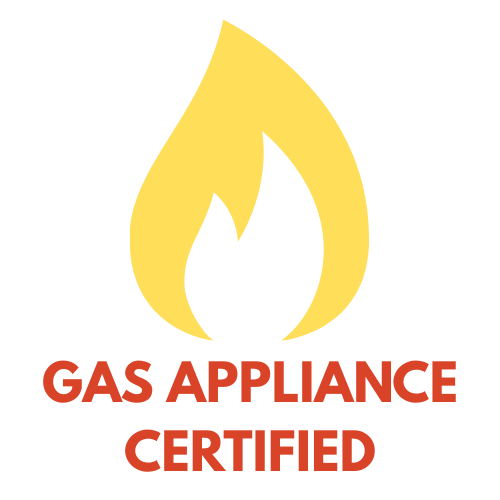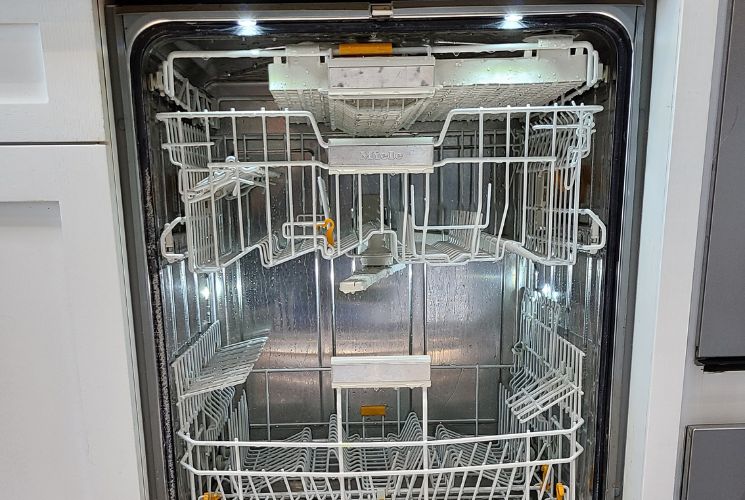Common Electrical Issues That Cause Dishwasher Malfunctions
When your dishwasher suddenly stops working, it’s more than just an inconvenience, it’s a disruption to your daily life. From dirty dishes piling up to water leaking onto your kitchen floor, electrical dishwasher issues can cause serious stress, especially when they come out of nowhere. At ASAP Appliance Repair, we’ve seen it all across Vancouver, Burnaby, Richmond, Surrey, and nearby areas. Most of the time, the root of the problem isn’t just a mechanical failure, it’s an electrical malfunction hiding behind the panel.
Understanding what’s going on inside your dishwasher can help you make an informed decision. Whether it’s a blown fuse, a faulty control board, or something more complex like a motor inverter issue, identifying these problems early can save you hundreds of dollars in damage and prevent that surprise second visit from a technician.
We’ve compiled the most common electrical failures we repair for dishwashers daily, especially in popular models from Whirlpool, Samsung, LG, GE, Frigidaire, Bosch, and KitchenAid. Whether your dishwasher won’t turn on, keeps beeping, or shuts off mid-cycle, this guide walks you through what’s happening and what to do next.
1. Control Board Failure and Other Serious Dishwasher Issues
What it does:
The control board is the brain of your dishwasher. It manages cycle timing, water temperature, spray arms, drying functions, and more. When it fails, everything else can shut down with it.
Symptoms:
- Dishwasher doesn’t turn on
- Lights flash but nothing happens
- Unit gets stuck on one part of the cycle
- Buttons stop responding or work intermittently
Why it fails:
Power surges, moisture damage, or overheating are common causes. In some cases, component fatigue over time leads to cracked solder points or fried relays.
Repair:
Replacement of the control board is the only reliable fix. At ASAP Appliance Repair, we always test the wiring and nearby components before replacing anything to ensure the root issue is addressed.
Common in:
- Samsung: LC or OE codes often signal control board problems
- LG: LE and HE errors frequently stem from motor-control miscommunication
- Whirlpool / KitchenAid: Older models can suffer heat-induced board burnout near the dry cycle phase
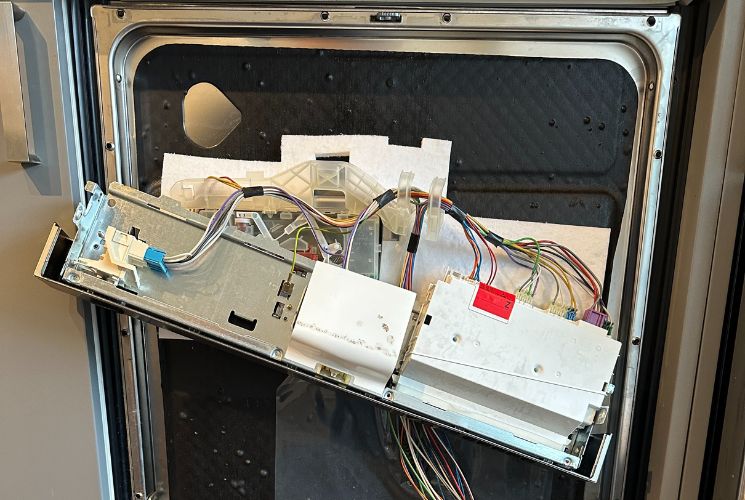
2. Thermal Fuse Failure
What it does:
The thermal fuse acts as a safety mechanism, cutting power to the unit if it detects overheating. It’s there to prevent electrical fires or motor burnouts.
Symptoms:
- The dishwasher is completely unresponsive
- No lights, no sounds, no activity
- The unit was working fine the day before
Why it fails:
Blocked vents, an overheating motor, or prolonged high heat cycles can trigger the fuse to blow. In some homes, we’ve seen improperly installed dishwashers trapping excess heat around the control housing.
Repair:
We replace the thermal fuse and test airflow, venting, and the high-limit thermostat to prevent a repeat failure.
Common in:
- Whirlpool: This is a widely known issue; kits are sold with updated thermostats to reduce recurrence
- GE: Moisture behind the control panel has led to fuse trips in older models
- Bosch: Fuse issues tied to blocked vent assemblies are seen in models with advanced drying systems
3. Dishwasher Door Latch or Switch Issues Causing Start Failures
What it does:
This small component ensures your dishwasher knows the door is securely closed. Without that signal, the unit will not start or run.
Symptoms:
- Pressing “Start” does nothing
- Unit clicks or tries to start, then stops
- Works only when you push the door firmly or wiggle the handle
Why it fails:
Mechanical wear over time, broken plastic latches, misaligned doors, or moisture damage inside the panel can all interfere with the switch.
Repair:
We replace the latch assembly or the switch itself, and adjust the strike plate to ensure proper door alignment.
Common in:
- Frigidaire: Known for weak latch designs that degrade over time
- GE: Frequent issues with door alignment on older models
- Samsung: Moisture intrusion has caused internal switch wiring to corrode in several models
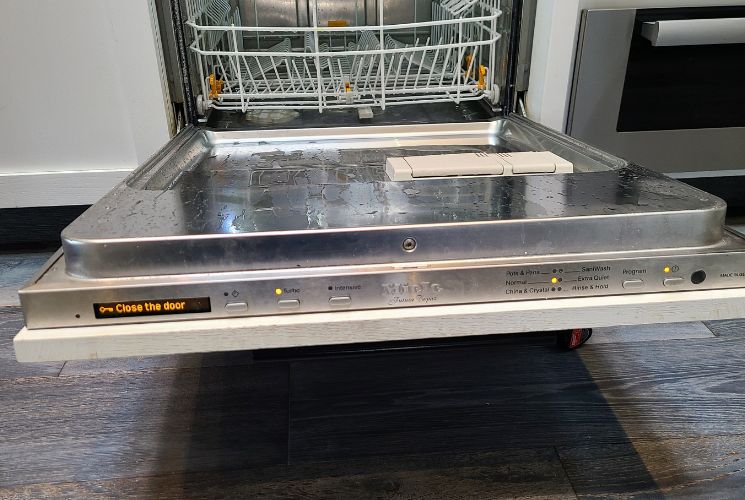
4. Wiring Harness Damage
What it does:
The wiring harness connects the control board to the pump, motor, heater, and sensors. Any break or short here can result in unpredictable performance or total shutdown.
Symptoms:
- Unit turns off randomly
- Some functions (like drying or draining) don’t work
- A burnt smell or visual sign of melted wires
Why it fails:
Wires can become loose from vibration, especially near the base where the motor is located. In some homes, we’ve even seen rodent damage or water leaks causing short circuits.
Repair:
Damaged sections of the harness are either repaired or fully replaced, and we secure them with vibration-resistant clips to prevent recurrence.
Common in:
- Bosch: Wiring harnesses near side-mounted control boards can fray after years of use
- Maytag: Harnesses routed near the motor often show insulation wear after 5+ years
5. Inverter Board Failure: One of the Most Misleading Dishwasher Issues
What it does:
Modern dishwashers from brands like LG and Samsung use inverter boards to control the brushless DC motor. This system helps with energy efficiency but is more sensitive to voltage issues.
Symptoms:
- Wash motor doesn’t run, even though the drain pump works
- Unit beeps and flashes error codes like “LE” or “OE”
- The dishwasher hums or clicks but doesn’t spray water
Why it fails:
Inverter boards are prone to overheating in tight cabinetry. Moisture or power surges can also burn out internal components.
Repair:
We replace the inverter board and test the motor to ensure it hasn’t been damaged. In some cases, we replace both together if diagnostics show poor motor resistance.
Common in:
- LG: Frequent “LE” errors due to board-motor sync issues
- Samsung: “OE” and “3C” codes are often tied to inverter board damage
6. Touchpad or Control Panel Failure
What it does:
The control panel or touchpad allows you to choose cycles, start the wash, and monitor status lights. When it fails, the dishwasher becomes difficult or impossible to operate.
Symptoms:
- Some buttons work, others don’t
- Display is blank or shows random characters
- The machine seems alive but doesn’t respond to commands
Why it fails:
Years of use wear down the membrane inside the control panel. Moisture from steam or leaks can also corrode the ribbon cable or UI board.
Repair:
We replace the user interface panel or the touchpad membrane and re-seat all cables to ensure solid contact.
Common in:
- Whirlpool / KitchenAid: Frequent wear on “Start” and “Normal” buttons
- GE: Capacitive touch systems can fail after minor surges or water exposure
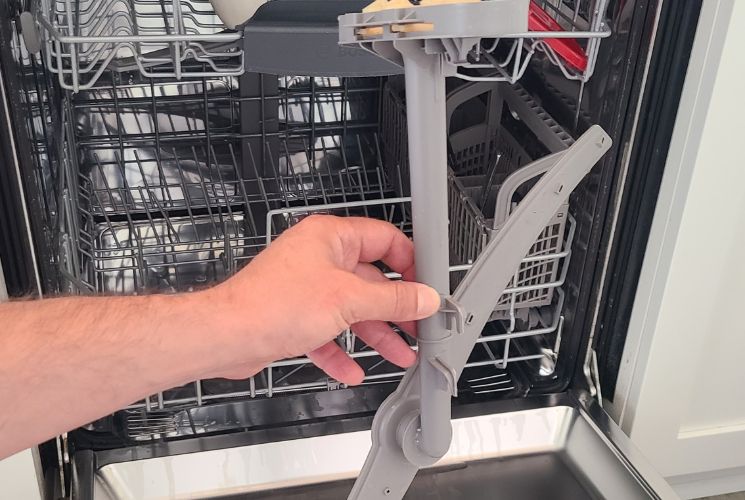
7. Float Switch Wiring or Sensor Failure
What it does:
This component detects water levels and prevents your dishwasher from overfilling or underfilling. It’s a critical safety feature.
Symptoms:
- Dishwasher won’t fill with water
- Immediately drains after filling
- Displays error codes like LG’s “FE” or Samsung’s “OE”
Why it fails:
Float switches can get stuck due to debris, or the wiring corrodes after years of exposure to moisture in the sump area. Sensors may misread levels due to scale buildup or electronic interference.
Repair:
We clean or replace the float switch or water level sensor, and we always inspect for cracked wires in the sump assembly.
Common in:
- LG: “FE” errors linked to overly sensitive water level sensors
- Samsung: Moisture buildup in the base triggers false “OE” readings
- GE: Mechanical floats in older units misalign after repeated use
8. GFCI or Power Supply Problems
What it does:
Provides electricity from your home’s main panel to the dishwasher. If the circuit trips or the outlet fails, the machine gets no power.
Symptoms:
- Unit is completely dead
- Dishwasher shuts off randomly and won’t restart
- Other kitchen outlets also losing power
Why it fails:
Dishwashers should be on a dedicated breaker, but many homes (especially older ones or condos) share outlets. GFCI outlets trip due to moisture or electrical surges. In wet Vancouver weather, we see this often.
Repair:
We inspect the breaker panel, test the outlet voltage, and recommend rewiring if needed to isolate the dishwasher on its own circuit.
Applies to all brands, especially in townhouses or units with poor electrical isolation.
Signs of Dishwasher Electrical Issues to Watch Out For
Brand |
Top Models in Canada |
Most Frequent Electrical Issues |
|---|---|---|
| Whirlpool | WDT750SAKZ, WDF520PADM | Thermal fuse trips, control board faults, keypad failure |
| LG | LDF5545ST, LDP6810SS | Inverter board faults, “LE”/”FE” codes, control panel miscommunication |
| Samsung | DW80R2031US, DW80B7070UG | Control board issues, moisture sensor faults, inverter board overheating |
| Bosch | SHE3AR75UC, SHXM78Z55N | Harness damage, vent-related thermal fuse tripping |
| GE | GDT665SSNSS, GDF530PSMSS | Door latch failure, float switch errors, power loss due to internal fuse |
| Frigidaire | FFCD2418US, FGID2479SF | Weak latch assembly, panel unresponsiveness |
| KitchenAid | KDPM604KPS, KDTM404KPS | Touchpad failure, control board overheating |
Why Electrical Dishwasher Issues Require Immediate Service
If your dishwasher is acting up and you’ve ruled out clogged filters or jammed spray arms, electrical issues are likely the next thing to check. The problem is that electrical components are buried deep inside, risking further damage if handled improperly.
We offer prompt dishwasher repair across the Greater Vancouver Area, including Burnaby, Richmond, Coquitlam, Langley, and North Vancouver. Our licensed technicians carry genuine parts for all major brands and use precise diagnostic tools to pinpoint the issue on the first visit.
Don’t rely on guesswork, and don’t delay repairs if your dishwasher is showing signs of electrical failure. A shorted control board can damage other components. A faulty motor board can cause your dishwasher to overheat and flood. It’s not just about fixing the problem, it’s about protecting your home.
If your dishwasher won’t start, stops mid-cycle, keeps beeping, or just doesn’t clean like it used to, let us take a look. Call ASAP Appliance Repair for expert, honest, and affordable dishwasher service in Vancouver.

